I read an interesting article on CTV News last night! The lady was talking about the attitudes of the wealthy and was impressed that most wealthy people she interviewed, discussed wealth outside the terms of money. Whenever money did come up, a list of generally accepted mindsets or attitudes began to develop and she shared them in her article here:
http://www.ctvnews.ca/5things/pattie-lovett-reid-engage-in-these-6-habits-of-the-wealthy-1.3374225
When I read this list, I was suddenly amazed at how my own family often accuses me of having a poverty mindset! I had to add my own thoughts to the author’s 6 main points in the article above. Before writing these out however, I showed my daughter this list and asked her how many of them are present in our home. She responded with “most if not all of them”, although current finances prevent us from enacting one of the sub-points in this list. It hasn’t however, stopped us from trying in the past, nor will it stop us from trying in the future. Here are my own thoughts. Anyone who has purchased my course “The Poor Man’s Budget: a Five Week Course – Learning to live within your means” (paid link) will recognize some of these points.
Change your money mindset: Have a positive attitude, increase your knowledge base, have goals and get disciplined ~ This begins by being thankful for what you have and following that Biblical concept that if you have two of something, give to him who has none. It can be tempting to hoard when you are financially struggling, living below the poverty line, or desperately battling debt. But if you honestly end up with more of something than you realistically know you need (not want), giving it away to someone else in need also contributes to a more positive attitude.
Sweep away your financial dustballs or myths:
a) Self worth equals net worth (Clearly it doesn’t but some might think it does) ~ I run into many people who believe this lie. Your self-worth is not found in things, nor in others around you. Your self-worth is found in the One Who made you! Your self-worth is found in Jesus Christ. Believe what He says about you in His Word and lack or plenty won’t affect your view of yourself. Secondarily, look after yourself no matter how much or little you have. You can always use water from a public fountain to wash up in the morning if you live on the streets. You can brush your hair and straighten your clothes. Walk with purpose rather than ambling aimlessly. Shake hands firmly and meet people eye to eye when greeting them. Don’t let life’s problems define who you are. Everyone, rich and poor have issues they battle with. Hold your head up and don’t let your particular issues drag you into the dirt.
b) A little debt never hurt anyone (Yes it will) ~ Financial advisors will tell you on one hand that it isn’t wise to get into debt. They will turn right around in the very next sentence and tell you to get a credit card so you can build up a positive credit rating. They will then go into detail about how to manage that credit card so that you ideally never slip into debt. Human nature, being what it is, will invariable see the credit limit, see an emergency, what Christmas approach, and decide to spend just a little bit more than they can pay off at the end of the month. They will justify it by saying now they have a debt load against which to build that credit rating, because creditors will see the monthly efforts. Now this is true to a point, but it will come back to bite you eventually. Yes, unfortunately the modern financial world won’t sell you a car or house if you don’t have positive credit ratings, but a little debt has and will continue to hurt people.
 c) I need at least $1 million to retire (No, you don’t) ~ What you need is to assess the lifestyle you want when you retire, what would it cost now and what is the current inflation rate? Based on that inflation rate, how much will you need to have in savings when you retire to lead that kind of lifestyle month by month?
c) I need at least $1 million to retire (No, you don’t) ~ What you need is to assess the lifestyle you want when you retire, what would it cost now and what is the current inflation rate? Based on that inflation rate, how much will you need to have in savings when you retire to lead that kind of lifestyle month by month?
d) I need to be a math major (Also, not true) ~ No, the above calculations are basic math. Addition and multiplication and maybe some division. If you graduated grade 6, you have what it takes to figure out the previous answer.
e) I don’t have enough money to start investing (How about $25 a month?) ~ Most people can afford at least $25/mo. Those living on fixed incomes may not be able to however, nor those living below the poverty line, but whenever possible, it is advisable to set aside even $5 a month if you can manage it. What I find in our household is that I can get up to $3 or $400 saved up, then an emergency comes along or income takes a dive and I need the funds to buy gas and groceries. I am looking forward to the day when income is steady and I can get that savings account above that particular threshold.
f) It’s too late for me to start building a nest egg (No it isn’t, and retirement could last a third of your life) ~ It’s true, you can start saving at any age, the earlier the better, but any time is a good time as long as it is sooner to your present than later.
g) Personal finance is all about investing (It is so much more encompassing: debt management, insurance, retirement planning and more) ~ The biggest point in personal finance, is budgeting based on what you are regularly earning at the time. Then learning to stick to that budget. Failure to get this step down will make any other financial management task more difficult.
h) I can do it alone (Maybe, but start by asking for help) ~ If you understand how to set money aside and not touch it, if you know about TFSA’s or RRSP’s already, sure, go it alone, but be almost religious about the plan you put into action. Asking for help often involves paying an advisor for their time or using their ongoing services from which they get paid a commission. If you can’t afford to pay someone for help, start small and work from there.
Eliminate the spending habit: Live below your means and ditch your bad debts ~ Hear, hear!!! This is the second worst problem I am seeing among those who claim to be struggling in their finances. They still visit the corner store regularly. They still buy cookies and candy bars regularly and sugary or other unhealthy food choices when grocery shopping. They still think they can engage in bad habits that cost them anywhere from $200/mo to $500 or more and they wonder where their money is going! Newsflash! You don’t need that jacket on sale when you have two others at home already. You don’t need sugary drinks or foods when because you are struggling, you need healthier food options instead. You don’t need to waste gas with extra-curricular activities when you can’t afford the gas to begin with. Start walking more. Cancel the Cable TV subscription and watch all your shows online. If this step isn’t mastered, the previous ones will all be derailed by some justification to spend!
Create a savings habit: Pay yourself first ~ See the previous comments about saving and spending.
Embrace the investing and compound habit: Learn more to earn more and compound your earnings ~ This may be where you want to ask for help, but in a standard savings account, if you leave your money there, the interest accrued will compound based on what stays in the account, previous interest and all. This can work in your favour.
Choose a destination: Get real and set goals ~ Revisit this entire list, master the other points and when you get to this one, write down those goals. In a quick-fix, instant-access society, long-term gratification seems like punishment. But if you can get over the need to spend and start actively saving toward your goals, you will discover the pride and personal joy in having achieved those goals on your own! Start with small goals that you can reach if you are disciplined in a month. Say perhaps you can get $25 put aside into savings. Reward yourself with a hot bath that night. Say perhaps you went for three months putting that money aside? Take $5 and go buy a booster juice smoothie (remember the poor spending point above). Say perhaps you managed to maintain your new saving regimen for an entire year, take $20 and go have pizza! These examples are merely for savings goals, but you might have other goals, like paying for a college course, replacing a dieing vehicle, maybe even owning your own home and saving up for a down-payment. Once you realize you can meet your smaller goals, these larger ones will become easier to achieve and you’ll have the necessary patience to see them through.
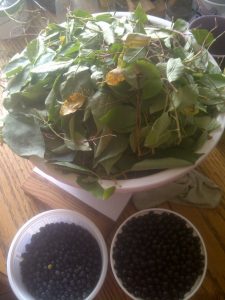 I like to use chokecherry in making vinegar for salads, pancake syrop, and using the leaves, dried crushed berries, and bark in teas and hot cocoa. Chokecherry really adds to the richness of cocoa! We don’t drink coffee, but when my daughter added some of the concentrate to a friend’s cup of coffee, supposedly it tasted really good.
I like to use chokecherry in making vinegar for salads, pancake syrop, and using the leaves, dried crushed berries, and bark in teas and hot cocoa. Chokecherry really adds to the richness of cocoa! We don’t drink coffee, but when my daughter added some of the concentrate to a friend’s cup of coffee, supposedly it tasted really good.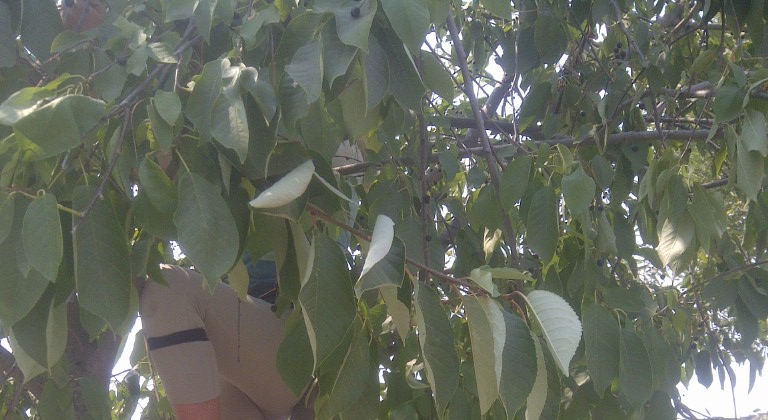

 Foraging in my part of the world has received quite the setback thanks to a very wet spring. The plantain plants are only now in enough abundance to start harvesting. Wild strawberries are several weeks behind as well. Domestically, we were blessed with a huge amount of Lovage, a cousin to the celery only stronger in flavour. I managed to dry and crush most of the leaves to make a very nice celery spice! After being given some salt, I intend to take some of it and turn it into Lovage celery salt.
Foraging in my part of the world has received quite the setback thanks to a very wet spring. The plantain plants are only now in enough abundance to start harvesting. Wild strawberries are several weeks behind as well. Domestically, we were blessed with a huge amount of Lovage, a cousin to the celery only stronger in flavour. I managed to dry and crush most of the leaves to make a very nice celery spice! After being given some salt, I intend to take some of it and turn it into Lovage celery salt. We were also given some very nice Rhubarb that has already made one beautiful batch of pancake syrup and seen entrance into batches of scones and pancakes themselves. I plan to make several more batches of the syrup as that will save money having to buy it at the store. Not only will it save money at the store, it will cut down on the chemicals and preservatives being ingested as well.
We were also given some very nice Rhubarb that has already made one beautiful batch of pancake syrup and seen entrance into batches of scones and pancakes themselves. I plan to make several more batches of the syrup as that will save money having to buy it at the store. Not only will it save money at the store, it will cut down on the chemicals and preservatives being ingested as well. Sometimes doing things yourself is not always a money-saver, healthier perhaps, but sometimes more expensive. Around this house, we are about both saving money AND eating healthier! So being able to make celery salt without the additives and make syrop without the extra ingredients as well, hits the best of both worlds. Some of my readers might laugh, but I’ve decided to ensure I have enough sugar for baking, cereals, pancake syrop and a pine needle syrop intended for lung ailments. I therefore divided up my current sugar stores into several containers!
Sometimes doing things yourself is not always a money-saver, healthier perhaps, but sometimes more expensive. Around this house, we are about both saving money AND eating healthier! So being able to make celery salt without the additives and make syrop without the extra ingredients as well, hits the best of both worlds. Some of my readers might laugh, but I’ve decided to ensure I have enough sugar for baking, cereals, pancake syrop and a pine needle syrop intended for lung ailments. I therefore divided up my current sugar stores into several containers!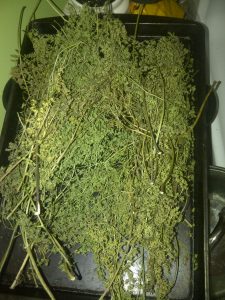 We have wild parsley growing up in the hills and have made two harvests so far. One has been nicely crushed into just under half a usual spice bottle. The other harvest still needs to be washed, dried, and crushed. It is currently in the back of the fridge freezing. Gotta love it when fridges do that, not merely their freezer boxes.
We have wild parsley growing up in the hills and have made two harvests so far. One has been nicely crushed into just under half a usual spice bottle. The other harvest still needs to be washed, dried, and crushed. It is currently in the back of the fridge freezing. Gotta love it when fridges do that, not merely their freezer boxes. We also found Prairie Sage growing on the property where we live. It is a milder smelling sage than what is bought at the store, but still a pleasant smell. It’s first use has been in a bottle of home-made fly spray for the two horses.
We also found Prairie Sage growing on the property where we live. It is a milder smelling sage than what is bought at the store, but still a pleasant smell. It’s first use has been in a bottle of home-made fly spray for the two horses.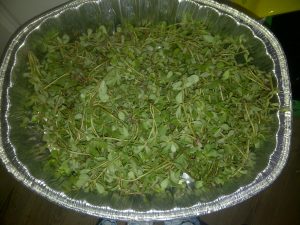 Our dinner salads have finally come back full swing. Plantain, dandelion, false solomon’s seal, purslane, and finally chickweed and a ground vine for good measure. I need to make more chokecherry vinaigrette, but that won’t happen till we are harvesting those berries this summer. One major thing we learned over the winter months was that we hadn’t harvested nearly enough chokecherry to get us through till the next harvest season! We hope to change that sad state of affairs this summer! Nor had we harvested enough purslane! Needless to say when my daughter was asked to weed a garden at her place of work, she came home with a huge haul of both purslane AND chickweed! Both have been divided in half for either immediate consumption or drying and crushing for use in teas, baking and medicine.
Our dinner salads have finally come back full swing. Plantain, dandelion, false solomon’s seal, purslane, and finally chickweed and a ground vine for good measure. I need to make more chokecherry vinaigrette, but that won’t happen till we are harvesting those berries this summer. One major thing we learned over the winter months was that we hadn’t harvested nearly enough chokecherry to get us through till the next harvest season! We hope to change that sad state of affairs this summer! Nor had we harvested enough purslane! Needless to say when my daughter was asked to weed a garden at her place of work, she came home with a huge haul of both purslane AND chickweed! Both have been divided in half for either immediate consumption or drying and crushing for use in teas, baking and medicine. Near our home and up a logging road, there are many chokecherry stands, so we hope to overrun the house with them until they are either boiled, frozen, or dried. Those same harvesting areas are also crawling in oregon grape, kinnickinnick, and surprisingly the wild strawberry as well. Our home could be very interesting as we end up with stuff drying all over the place at various times in the season.
Near our home and up a logging road, there are many chokecherry stands, so we hope to overrun the house with them until they are either boiled, frozen, or dried. Those same harvesting areas are also crawling in oregon grape, kinnickinnick, and surprisingly the wild strawberry as well. Our home could be very interesting as we end up with stuff drying all over the place at various times in the season.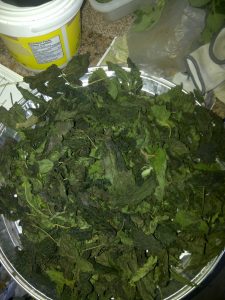 Already, we’ve harvested, dried, and begun putting to use the nettle in our area. Nettle gets used in baking, tea, shampoo, conditioner, and its seeds are also a wild seasoning. Again, we almost didn’t have enough once I began using it in crackers and more teas, so we need to get far more this year to last through until next Spring.
Already, we’ve harvested, dried, and begun putting to use the nettle in our area. Nettle gets used in baking, tea, shampoo, conditioner, and its seeds are also a wild seasoning. Again, we almost didn’t have enough once I began using it in crackers and more teas, so we need to get far more this year to last through until next Spring.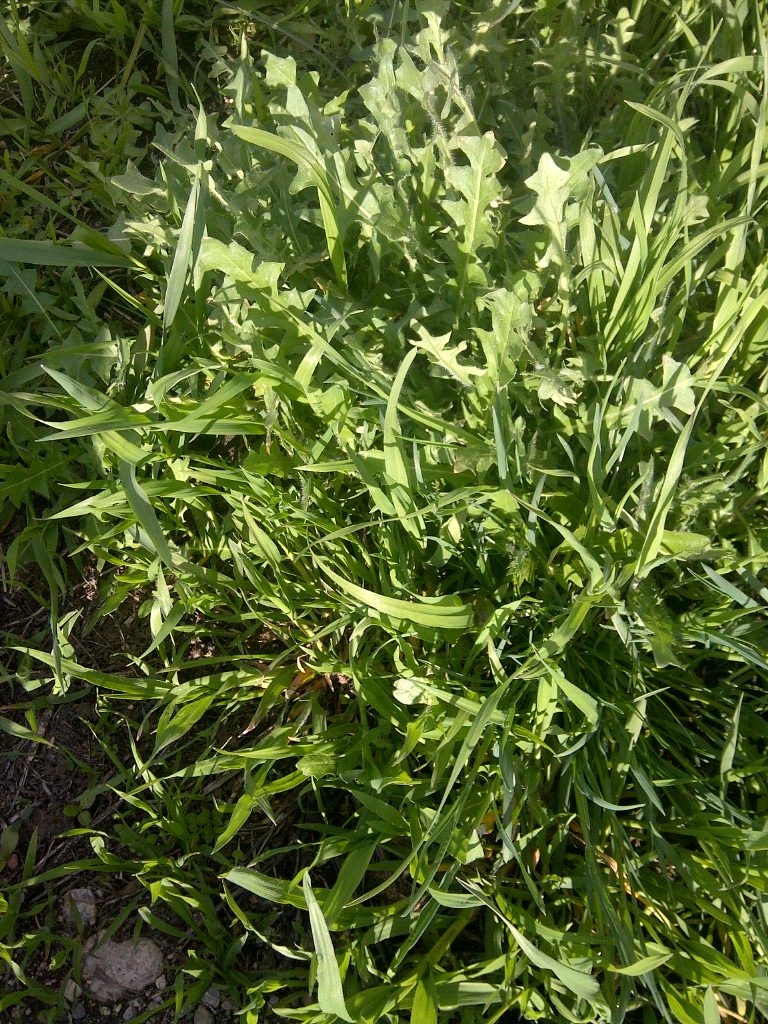
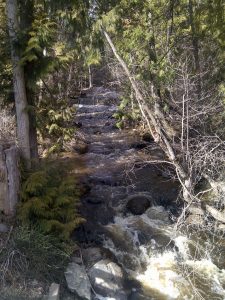 Last November, we had to move yet again, for the second time in two years. When we were house-hunting, we reached a stage where it became humanly impossible to find a place to live. We made up an impossible list of needs and preferences, then laid that before God. Included in that prayer was the request to be near foraging grounds so we could continue our wild adventures. FrontcounterBC had shown us that our new location was near crown land and when the snows began to recede, we began exploring. That crown land is going to be a treasure trove of berries by the time June rolls around! Its crawling with Oregon Grape, Kinnickinnick and Chokecherry! We took a couple treks out to our old stomping grounds near the regional park and came home with one evening’s salad roughly. But those weren’t the biggest surprise.
Last November, we had to move yet again, for the second time in two years. When we were house-hunting, we reached a stage where it became humanly impossible to find a place to live. We made up an impossible list of needs and preferences, then laid that before God. Included in that prayer was the request to be near foraging grounds so we could continue our wild adventures. FrontcounterBC had shown us that our new location was near crown land and when the snows began to recede, we began exploring. That crown land is going to be a treasure trove of berries by the time June rolls around! Its crawling with Oregon Grape, Kinnickinnick and Chokecherry! We took a couple treks out to our old stomping grounds near the regional park and came home with one evening’s salad roughly. But those weren’t the biggest surprise.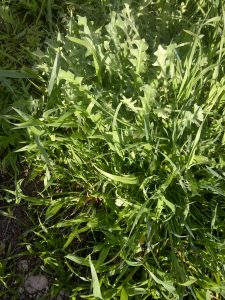 The grasses and hillside around our rental property began to grow and lo and behold. . . we are LIVING in the middle of a foraging ground! Yarrow is growing in droves up on the hillside above us, along with barley (read quack) grasses and Arrowleaf Balsam Root. However, down around our portion of the yard we didn’t give the horses, we have dandelion, chicory, alfalfa, and another salad leaf I am still trying to identify, growing in such abundance that we can have several days’ worth of mixed green salads in maybe 10 minutes of picking! The alfalfa is blow-overs from the hay field below us. As we are up on a hillside now, the dandelions are slower in getting their flowering heads up, but I saw one today.
The grasses and hillside around our rental property began to grow and lo and behold. . . we are LIVING in the middle of a foraging ground! Yarrow is growing in droves up on the hillside above us, along with barley (read quack) grasses and Arrowleaf Balsam Root. However, down around our portion of the yard we didn’t give the horses, we have dandelion, chicory, alfalfa, and another salad leaf I am still trying to identify, growing in such abundance that we can have several days’ worth of mixed green salads in maybe 10 minutes of picking! The alfalfa is blow-overs from the hay field below us. As we are up on a hillside now, the dandelions are slower in getting their flowering heads up, but I saw one today.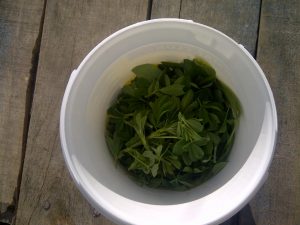 It’s nice to have the salads again as we discovered that winter salad teas, while they may have a similar nutrition count, are not as filling and were missing the phytochemicals that we need.
It’s nice to have the salads again as we discovered that winter salad teas, while they may have a similar nutrition count, are not as filling and were missing the phytochemicals that we need.
 c) I need at least $1 million to retire (No, you don’t) ~ What you need is to assess the lifestyle you want when you retire, what would it cost now and what is the current inflation rate? Based on that inflation rate, how much will you need to have in savings when you retire to lead that kind of lifestyle month by month?
c) I need at least $1 million to retire (No, you don’t) ~ What you need is to assess the lifestyle you want when you retire, what would it cost now and what is the current inflation rate? Based on that inflation rate, how much will you need to have in savings when you retire to lead that kind of lifestyle month by month?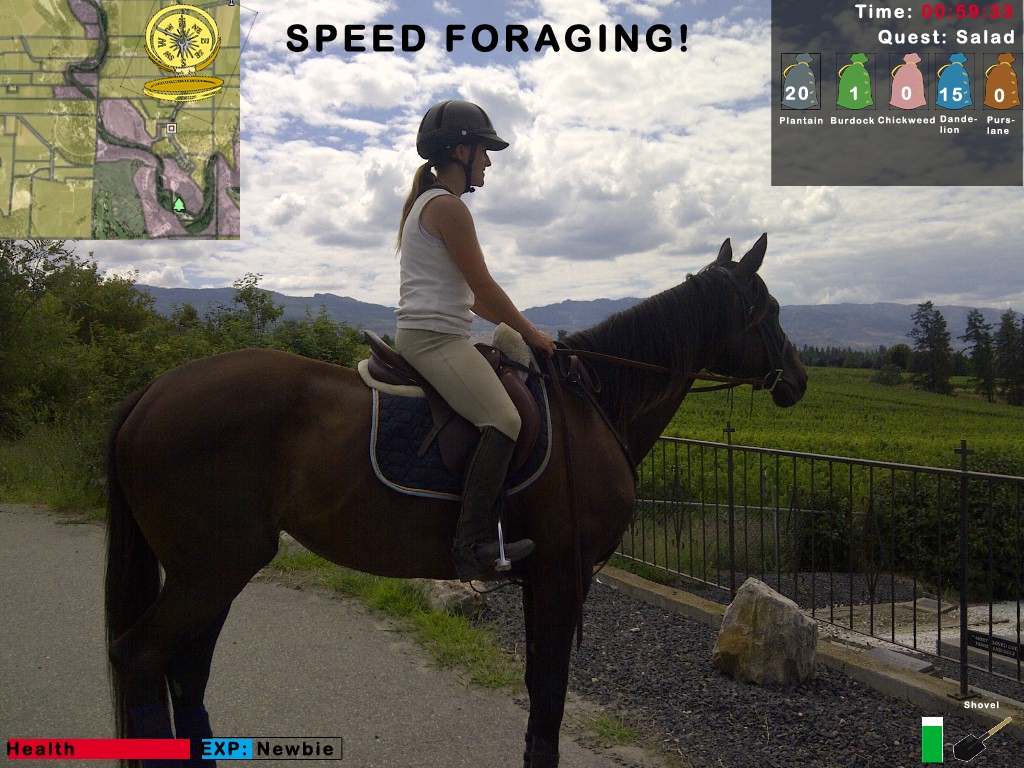
 At the top, we found scrub everywhere and very little of the items we’d come to find. Eventually, we spotted a small burdock specimen and decided to pull out our plastic gardening spade to see if we could get at the root. When documentation you read says it looks carrot-like, they aren’t kidding! When they say the root could go down 2 to 3 feet, they aren’t kidding! What many sources fail to say however, is that the first almost foot’s worth is quite fat! My daughter dug down just below this tuber then used our tiny rose sheers to snip her way through the inch-thick root (the part the Japanese harvest to sell and cook) to remove the tuber. This took a bit of time when we realized we should head back before they close the parking lot gate where we left the van.
At the top, we found scrub everywhere and very little of the items we’d come to find. Eventually, we spotted a small burdock specimen and decided to pull out our plastic gardening spade to see if we could get at the root. When documentation you read says it looks carrot-like, they aren’t kidding! When they say the root could go down 2 to 3 feet, they aren’t kidding! What many sources fail to say however, is that the first almost foot’s worth is quite fat! My daughter dug down just below this tuber then used our tiny rose sheers to snip her way through the inch-thick root (the part the Japanese harvest to sell and cook) to remove the tuber. This took a bit of time when we realized we should head back before they close the parking lot gate where we left the van. We got back down to our marker when Ashley discovered a whole stand of chokecherry! She began picking a number of sprigs as quickly as she could. As we speed-walked back to the van, I told her that anything she spotted ahead that she could grab before I got there, would go in the bag. So off she went! You might wonder why this article was started as if beginning a quest in a video game. Ashley kept remarking as we speedwalked back to the van, that she felt as if she was doing in real life what her characters did in her MMO’s (short for MMPORG or Massive Multiplayer Role Playing Game).
We got back down to our marker when Ashley discovered a whole stand of chokecherry! She began picking a number of sprigs as quickly as she could. As we speed-walked back to the van, I told her that anything she spotted ahead that she could grab before I got there, would go in the bag. So off she went! You might wonder why this article was started as if beginning a quest in a video game. Ashley kept remarking as we speedwalked back to the van, that she felt as if she was doing in real life what her characters did in her MMO’s (short for MMPORG or Massive Multiplayer Role Playing Game).  Apparently in her games, characters can be given quests where they need to gather materials before they can make things. Some games call these recipes, others call them schematics, etc. The character has to run around (and they literally run around, not walk) and when the player sees an item they need, they use in-game commands to tell the character to pick up the item. For some games, you select the item, for others, you choose a tool, then click on the item, for others, you merely come into range and the character picks up the item. So there was my daughter, running ahead of me, picking up what she could along the path, snapping up this and that on our list. Before we knew it, we saw the parking lot up ahead! Somehow, we made the trek back to the van in less than 25 minutes!
Apparently in her games, characters can be given quests where they need to gather materials before they can make things. Some games call these recipes, others call them schematics, etc. The character has to run around (and they literally run around, not walk) and when the player sees an item they need, they use in-game commands to tell the character to pick up the item. For some games, you select the item, for others, you choose a tool, then click on the item, for others, you merely come into range and the character picks up the item. So there was my daughter, running ahead of me, picking up what she could along the path, snapping up this and that on our list. Before we knew it, we saw the parking lot up ahead! Somehow, we made the trek back to the van in less than 25 minutes! We had a good handful of narrow-leaf plantain, dandelion leaves and a couple roots, chokecherry, a burdock root, a couple burdock leaves and a couple small burdock heads. Ashley had grabbed a few clover heads along the way as well. We didn’t spot any chickweed or purslane, and cattails don’t grow along that trail either it seems. So we drove home with what we had.
We had a good handful of narrow-leaf plantain, dandelion leaves and a couple roots, chokecherry, a burdock root, a couple burdock leaves and a couple small burdock heads. Ashley had grabbed a few clover heads along the way as well. We didn’t spot any chickweed or purslane, and cattails don’t grow along that trail either it seems. So we drove home with what we had. Upon arrival at home, it was time to clean the greens, clean the roots, and learn what to do with the chokecherries. They literally look like tiny cherries WITH pits! I did some research and bookmarked a couple sites that shared recipes for chokecherry juice, jams, jellies, bread, muffins, etc. I need to get my hands on a hand mill of some type because dried chokecherry flour can be added to baking! I learned that you don’t eat this berry raw due to cayonogenic properties. You need to sun-dry or boil them to kill these properties. Our first foray into chokecherry processing then, became an infused vinegar salad dressing. The chokecherries ended up boiled twice as a result, first to mash them, second to make the salad dressing as the vinegar needed boiling. The leaves and bark make a nice tea according to some sources, so we kept the leaves and twigs to dry for that purpose.
Upon arrival at home, it was time to clean the greens, clean the roots, and learn what to do with the chokecherries. They literally look like tiny cherries WITH pits! I did some research and bookmarked a couple sites that shared recipes for chokecherry juice, jams, jellies, bread, muffins, etc. I need to get my hands on a hand mill of some type because dried chokecherry flour can be added to baking! I learned that you don’t eat this berry raw due to cayonogenic properties. You need to sun-dry or boil them to kill these properties. Our first foray into chokecherry processing then, became an infused vinegar salad dressing. The chokecherries ended up boiled twice as a result, first to mash them, second to make the salad dressing as the vinegar needed boiling. The leaves and bark make a nice tea according to some sources, so we kept the leaves and twigs to dry for that purpose.
 It all started innocently enough. . . my daughter’s horse comes down with rain-rot on occasion and unless we want to pump her full of dewormer constantly, we had to come up with alternative methods to kill the fungal infection. Last year we had some success directly applying in alternating turns, tea tree oil and lavendar oil. This year, while walking through the “Made in Canada” bazaar downtown on Canada Day, we found a
It all started innocently enough. . . my daughter’s horse comes down with rain-rot on occasion and unless we want to pump her full of dewormer constantly, we had to come up with alternative methods to kill the fungal infection. Last year we had some success directly applying in alternating turns, tea tree oil and lavendar oil. This year, while walking through the “Made in Canada” bazaar downtown on Canada Day, we found a  He suggested obtaining chickweed, plantain, burdock and optionally, violet and make a double-boiled oil infusion. We were to use the leaves of three of the plants and the root of the burdock. No turtle tongues were harmed in the making of this infusion. Promise!
He suggested obtaining chickweed, plantain, burdock and optionally, violet and make a double-boiled oil infusion. We were to use the leaves of three of the plants and the root of the burdock. No turtle tongues were harmed in the making of this infusion. Promise! Well, now it was time to see what we all thought of these plants. My daughter took the plunge first, trying out both broad-leaf and narrow-leaf plantain, and a succulent we discovered in a blog article the night before. She quickly made an additional discovery that many travelers face when eating foreign foods for the first time. Her stomach wasn’t used to the wild food and initially didn’t know what to do with it. A few hours later, it stopped feeling strange and she was fine. During her system’s recovery, I went next and made a tiny salad of dandelion heads, a couple dandelion leaves, and a few narrow-leaf plantain leaves (as that’s all that grows in our yard). I added a few rasberries and a bit of canned salmon, then used a vinegrette salad dressing. I LOVED IT! But then I had to remind myself that as a child, I used to nibble on clover tops, pine needles (which are also on one blogger’s edible plants infographic), and grass fronds. Back then I didn’t know pine needles were edible, so I chewed them for the flavour and spit them out. But my stomach was not anywhere near as upset as my daughter’s, and recovered faster from what little upset it did have. Clearly eating such things as a child had done something to prep my system that never left. Next came my son and our boarder. I made similar tiny salads for them and let them use the salad dressing of their choice. I was so excited to hear “not bad, it would taste better if it also had. . . /this needs. . . “. To me, that was a resounding success!
Well, now it was time to see what we all thought of these plants. My daughter took the plunge first, trying out both broad-leaf and narrow-leaf plantain, and a succulent we discovered in a blog article the night before. She quickly made an additional discovery that many travelers face when eating foreign foods for the first time. Her stomach wasn’t used to the wild food and initially didn’t know what to do with it. A few hours later, it stopped feeling strange and she was fine. During her system’s recovery, I went next and made a tiny salad of dandelion heads, a couple dandelion leaves, and a few narrow-leaf plantain leaves (as that’s all that grows in our yard). I added a few rasberries and a bit of canned salmon, then used a vinegrette salad dressing. I LOVED IT! But then I had to remind myself that as a child, I used to nibble on clover tops, pine needles (which are also on one blogger’s edible plants infographic), and grass fronds. Back then I didn’t know pine needles were edible, so I chewed them for the flavour and spit them out. But my stomach was not anywhere near as upset as my daughter’s, and recovered faster from what little upset it did have. Clearly eating such things as a child had done something to prep my system that never left. Next came my son and our boarder. I made similar tiny salads for them and let them use the salad dressing of their choice. I was so excited to hear “not bad, it would taste better if it also had. . . /this needs. . . “. To me, that was a resounding success!


 I was just talking to a co-worker at my church about “due dates” and “expiry dates”. She was sharing how someone she knows regularly tosses items in her fridge and pantry simply because the expiry date has come and gone. Both of us shared how we’ve seen milk last up to two weeks beyond it’s apparent due date, yet also seen milk expire well before its due date. Consequently, I am inclined to agree with the “experts” mentioned in this article that your own nose is a far better judge of the state of a piece of food than the dates given on the package.
I was just talking to a co-worker at my church about “due dates” and “expiry dates”. She was sharing how someone she knows regularly tosses items in her fridge and pantry simply because the expiry date has come and gone. Both of us shared how we’ve seen milk last up to two weeks beyond it’s apparent due date, yet also seen milk expire well before its due date. Consequently, I am inclined to agree with the “experts” mentioned in this article that your own nose is a far better judge of the state of a piece of food than the dates given on the package. The Germans weren’t just known for their precision and careful attention to detail. They were also known for being quite thrifty, inventive, and improvising whereever needed. These recipes involving stale bread are just a few of the kitchen examples I have learned thanks to these international cookbooks in my collection. Because of their example, I can no longer tell you when a cookie tastes stale, when crackers have gone stale, when dry cereal has supposedly gone stale, etc. My kids now fail to see the importance of keeping dry foods sealed because they can’t tell the difference either. When we hear of others complaining about stale dry goods, even within our own extended family, we find ourselves wanting to look at them strange while trying to remain polite.
The Germans weren’t just known for their precision and careful attention to detail. They were also known for being quite thrifty, inventive, and improvising whereever needed. These recipes involving stale bread are just a few of the kitchen examples I have learned thanks to these international cookbooks in my collection. Because of their example, I can no longer tell you when a cookie tastes stale, when crackers have gone stale, when dry cereal has supposedly gone stale, etc. My kids now fail to see the importance of keeping dry foods sealed because they can’t tell the difference either. When we hear of others complaining about stale dry goods, even within our own extended family, we find ourselves wanting to look at them strange while trying to remain polite. Attitudes and behaviours affect how we spend our money greatly! Learn more about this kind of discussion during week 3 and during discussion week 5 of my course,
Attitudes and behaviours affect how we spend our money greatly! Learn more about this kind of discussion during week 3 and during discussion week 5 of my course,